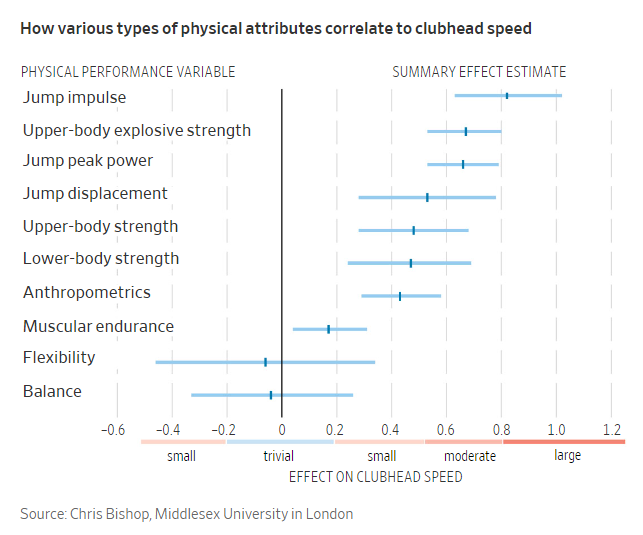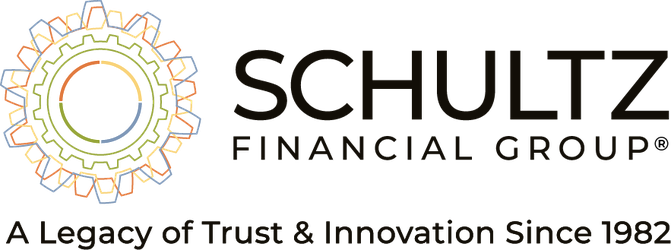
By Chris Bishop
April 11, 2024
Golfers are constantly trying all sorts of things to improve their golf game. They try new clubs, new grips, new stance, new attitude. But they often ignore the one thing that is most effective: physical training, which can help them hit the ball farther.
What’s more, even if they do concentrate on physical training, they may be missing the specific types of training that research has shown to be most effective. My colleagues and I have examined which physical attributes are most related to distance, and uncovered the ones that are likely to make the biggest difference in terms of hitting a golf ball farther—and the ones that probably won’t help much at all.

iStock image
Farther is better
First, though, it helps to understand why hitting the ball farther is the best way to lower a golf score.
Mark Broadie, a professor at Columbia Business School, found that, on average, a player on the PGA Tour who can hit the ball 20 yards farther with no loss in accuracy will gain about 1.4 strokes on their competitors.
Intuitively, this makes sense. Imagine two players competing on a 450-yard, par-4 hole. One drives the ball 250 yards and has 200 yards to the flag, while the other player drives the ball 300 yards and has only 150 yards to the flag. For the next shot, the person closer to the hole might choose, say, a 9-iron, while the one farther away will have to use a 5-iron. The 9-iron offers a much greater chance of improved accuracy than the 5-iron—especially for amateur golfers. The upshot: The farther you can hit, the more quickly you can use a club that allows you to be more accurate. And the more accurate you are, the lower your score will be.
Naturally then, this raises the question: How do we hit the ball farther? While numerous factors play a role, the clearest one is clubhead speed. Put simply, if we are stronger and more powerful, we should have the ability to swing the club faster.
The findings
But there are different types of strength, and when it comes to hitting a golf ball farther, all of them aren’t equal. So my colleagues and I looked at various types of physical attributes to see which ones were most highly correlated to clubhead speed.
Our main findings (which can be seen in the accompanying chart):
• Lower body and upper body explosive strength or power training is the most important for golfers. This is because the speed of the golf swing is often close to or even in excess of 100 mph, meaning explosive, high-velocity training is more closely aligned to the demands of the swing than other physical attributes.
• The second most important attribute is strength, in both the lower body and upper body. The speed of movement during traditional strength training is slower than power training and may be one reason why its relevance appears to be lower than explosive strength. However, being strong is also critical for being powerful, and so can’t be ignored. In fact, if you don’t have much physical training experience, strength training is almost always the most appropriate starting point.
• Third on our list is anthropometrics—that is, measurement of the body, such as height, body mass and wingspan. While height and wingspan cannot be changed, increasing lean muscle mass is possible and a likely byproduct from strength and power training, which will help you swing the club faster.
• On the flip side, muscle capacity (or endurance) is less relevant for clubhead speed. This is because swing speed is better determined by your strength and power ability, not your capacity to perform lots of repetitions during exercise.
• Historically, many have believed that flexibility is one of (if not the) most important physical attributes for golf. However, our research says otherwise. While having excessively poor mobility and flexibility can be a problem, the ability to adjust your movement can also be important. For example, if golfers cannot reach the top of their backswing due to poor flexibility, they will simply find an alternative solution to the problem, by moving their body in a different way—making flexibility less relevant than many have thought over the years.

Recommended exercises
Now that we know what physical attributes are best, the next question is: How can you get them? I’d recommend these exercises:
• Lower body power: Any type of body weight jumping exercise will work well, such as a vertical jump, standing long jump or jumping up to a box (but don’t make it too high). Initially, perform 2-3 sets of 3-5 repetitions.
• Lower body strength: Exercises such as squats and lunges are excellent choices. If you have little experience doing this sort of training, start with just your body weight before progressing with any additional load. Initially, perform 2-3 sets of 6-8 repetitions (remembering to swap legs on the lunges, too).
• Upper body power: Medicine-ball throws (such as a seated chest pass or standing rotational toss) are great exercises to develop this physical quality. As a guideline, don’t use a medicine ball that is more than 10% of your body weight. Initially, perform 2-3 sets of 3-5 repetitions.
• Upper body strength: If in the gym, exercises such as dumbbell chest presses, single arm dumbbell rows and dumbbell shoulder presses will cover this attribute nicely. However, if you are looking for body-weight exercises, push-ups are a great starting point. Initially, perform 2-3 sets of 6-8 repetitions for each exercise.
• Trunk strength: Although not outlined as being a critical physical attribute in our research, the lower back is an area that golfers often suffer with. With this in mind, exercises such as planks, glute bridges and rollouts are a good way of keeping the abdominals and gluteal muscles strong, which will help to support your lower back.
Chris Bishop is an associate professor of strength and conditioning at Middlesex University in London. He can be reached at reports@wsj.com.
Dow Jones & Company, Inc.


